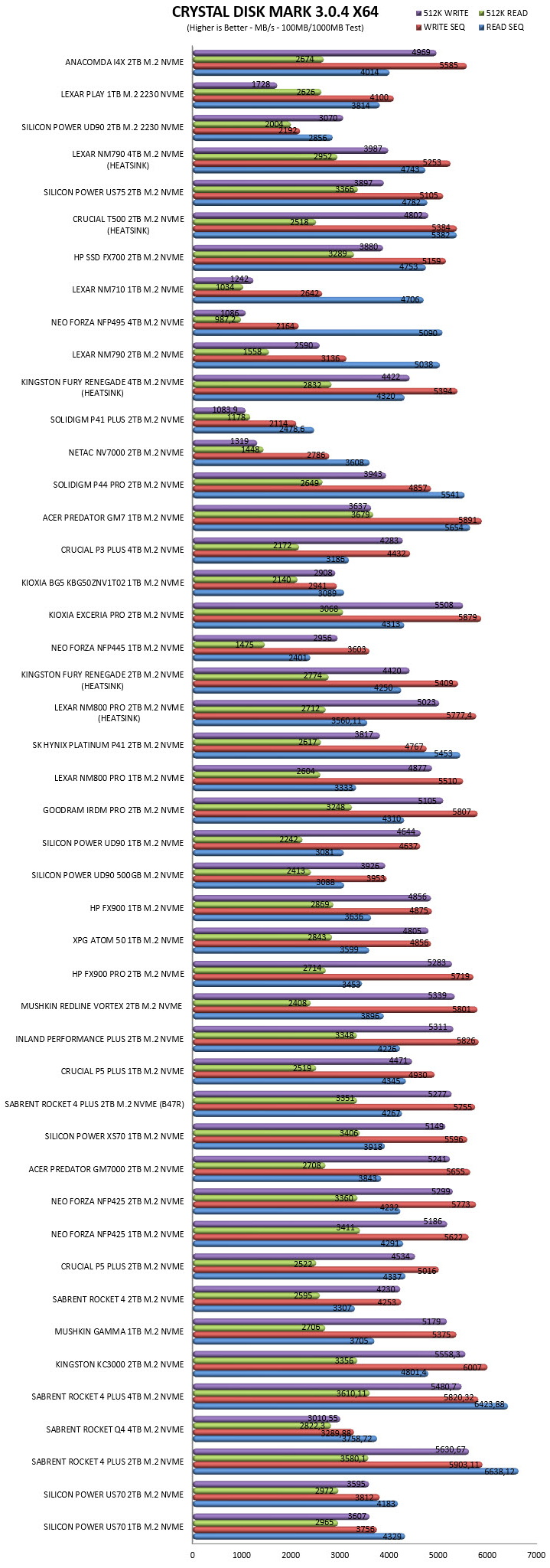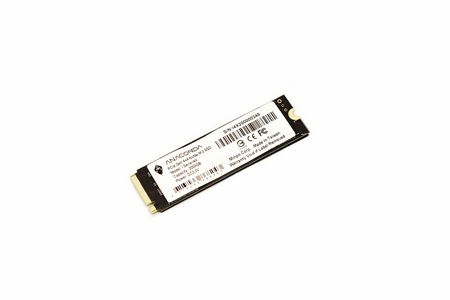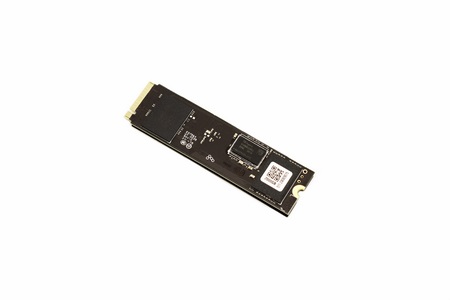INTRODUCTION

Even though things are not still great when it comes to the release of new PCIe 5.0 Gen5 SSDs (primarily due to supply chain issues which in turn result in increased costs for manufacturers) PCIe 4.0 Gen4 models still represent great value for money, as they should really. Yes, on paper Gen4 models may not be as impressive as their Gen5 brothers but with read/write speeds surpassing 7000MB/s for many of the top models they are clearly more than enough for most users out there. The good news is that thanks to NAND controller manufacturers like PHISON even relatively new manufacturers can dish out top of the line models and that's exactly the case with ANACOMDA and their I4X Fiery Serpent Gen4 M.2 NVMe SSD.
The anaconda in our logo stands for the phenomenal speed and immense capacity of our products, as well as the connection between our products, global trends, and human development. ANACOMDA believes that data storage products should be technology encased in fine works of art. Our products are produced under strict manufacturing standards. In addition to various customer services, our brand also offer designs that are aesthetically pleasing. The original concept of ANACOMDA is to "turn memory into luxury" and offer customers a brand new electronic product experience. This led us to our ultimate brand concept: Luxury For Memory.
The I4X Fiery Serpent M.2 NVMe SSD is a Gen4 model currently available in 1/2/4/8TB capacities (always according to the specifications page) and is based on the 8-channel, tri-core (32-bit ARM Cortex R5 CPUs) PS5018-E18 NVMe v1.4 compatible NAND flash controller by PHISON which ANACOMDA has paired with 112-layer BiCS5 3D TLC NAND flash by KIOXIA and 2GB of DDR4L-3200 SDRAM by SKHynix for the 2TB model on my test bench today. Once again, the PS5018-E18 NAND flash controller by PHISON features their 4th Gen LDPC engine (low-density parity check) along with end-to-end data path protection, wear levelling, thermal throttling (70 degrees Celsius limit), TRIM, bad block management, dynamic range SLC cache and SmartECC (RAID ECC). As expected, to compete with other brands ANACOMDA covers the entire I4X Fiery Serpent line with a 5-year limited warranty and as for endurance numbers it reports an MTBF (meantime between failures) of 1.6 million hours for all models.
SPECIFICATIONS AND FEATURES

THE I4X FIERY SERPENT 2TB
ANACOMDA uses a black and blue box to ship the I4X line the front of which is taken by a product picture, their logo and the main product features.
Capacity selection and company information is what we see at the rear of the box.
Just the drive itself is inside the box so nothing exciting here.
The top sticker is made of aluminum so it should provide a small degree of heat dissipation.



 Removing the top sticker reveals the PS5018-E18-41 NAND controller by PHISON, single 1GB DDR4L-3200 SDRAM chip by SKHynix and two 112-layer BiCS5 3D TLC NAND flash modules by KIOXIA.
Removing the top sticker reveals the PS5018-E18-41 NAND controller by PHISON, single 1GB DDR4L-3200 SDRAM chip by SKHynix and two 112-layer BiCS5 3D TLC NAND flash modules by KIOXIA.
A sticker with the model name, capacity, serial number and barcode is present on the other side.
Beneath the sticker we find another 1GB DDR4L-3200 SDRAM chip by SKHynix and two more 112-layer BiCS5 3D TLC NAND flash modules by KIOXIA.
TEST BED


TESTING METHODOLOGY
Not long after I first started testing SSDs back in 2008, I concluded that it's almost impossible for any single benchmark suite to accurately measure their performance and that's why in certain benchmark suites we see amazing read/write performance numbers with some drives while in others things are quite different. The reason behind this is that some benchmarking suites are configured to read and write random chunks of data while others read and write constant (sequential) ones. So that's why i always use a very wide selection of benchmarking suites including AIDA64, HD Tach RW, HD Tune Pro, Crystal Disk Mark, Sisoftware Sandra Pro, AS SSD, IOmeter and ATTO. To get the most accurate results each test gets repeated a total of 6 times with the average performance numbers recorded into the charts*/****. Also, as of February 25th 2015 our results will also include the Storage Networking Industry Association’s (SNIA) IOMeter tests. These tests include a 12 Hour write test used to “simulate” performance degradation over time and a mixed workload test which basically shows what you can expect when using an SSD continuously for roughly two hours. Unfortunately, due to the time required for these tests they get repeated a total of 3 times and not 6 as the above.
Many people have made inquiries about our charts in the past so once again please do keep in mind that the Charts have the average performance numbers of each drive recorded and not the peak (highest) ones. Also, although every single one of these programs can help potential buyers choose the right drive for their needs you should also remember that from any kind of benchmark up to real world usage the gap is not small (and usually most differences will go unnoticed by most people). All tests were performed in a fresh Windows 10 Pro x64 installation complete with every update up to the date of this review.
* Since November 2018 the SSD comparison charts have been divided to 2.5” and M.2 models to reduce their growing size.
** Unless stated otherwise the Ryzen 9 3950x based Test Rig used for M.2 Gen 4 SSD reviews is not located in the lab.
*** As of January 2021 for Gen 3x4 models I’ll be using the Core i9-7980XE test rig (after numerous tests the up to 6% difference in read & write performance compared to the i7-6700 system simply wasn’t enough to justify having an extra test rig around).
**** Since February 2022 M.2 NVMe Gen3 and Gen4 SSD drives are placed in different charts.
TEST RESULTS - AIDA64 / ATTO


TEST RESULTS - HD TACH RW / HD TUNE PRO


TEST RESULTS - SISOFTWARE SANDRA PRO / CRYSTAL DISK MARK


TEST RESULTS - AS SSD / IOMETER


TEST RESULTS - IOMETER SNIA



CONCLUSION

ANACOMDA may not be among the well-established names in the PC storage market but as with others they were willing to invest in the development of the I4X Fiery Serpent M.2 NVMe SSD line and that was enough to produce a very good Gen4 model. Performance is among the best, durability although not listed online should be around the 1400TBW mark for the 2TB variant (always based on similar models) and as for warranty 5-years should be plenty. On top of that ANACOMDA has or will soon have the I4X at 8TB something which we don’t see nearly as much in the market, even though it’s high time we did.
Availability is clearly the sole downside of the I4X Fiery Serpent line of Gen4 M.2 NVMe SSDs by ANACOMDA since I couldn’t locate the 2TB capacity model (or the 4/8TB ones) inside the USA or the EU (Newegg has just the 1TB model listed). Unfortunately, this is something I’ve seen far too many times and in the end it’s the consumer base that takes the hit since just like the I4X there are very good products out there that may never make it out Asia, not in large quantities. With that out of the way however the I4X Fiery Serpent 2TB Gen4 M.2 NVMe SSD does deliver and for that it deserves the Golden Award.

PROS
- Very Good Performance
- Available Capacities (1/2/4/8TB)
- Aluminum Top (Heat Dissipation)
- 5 Year Limited Warranty
CONS
- USA / EU Availability

 O-Sense
O-Sense














.png)

